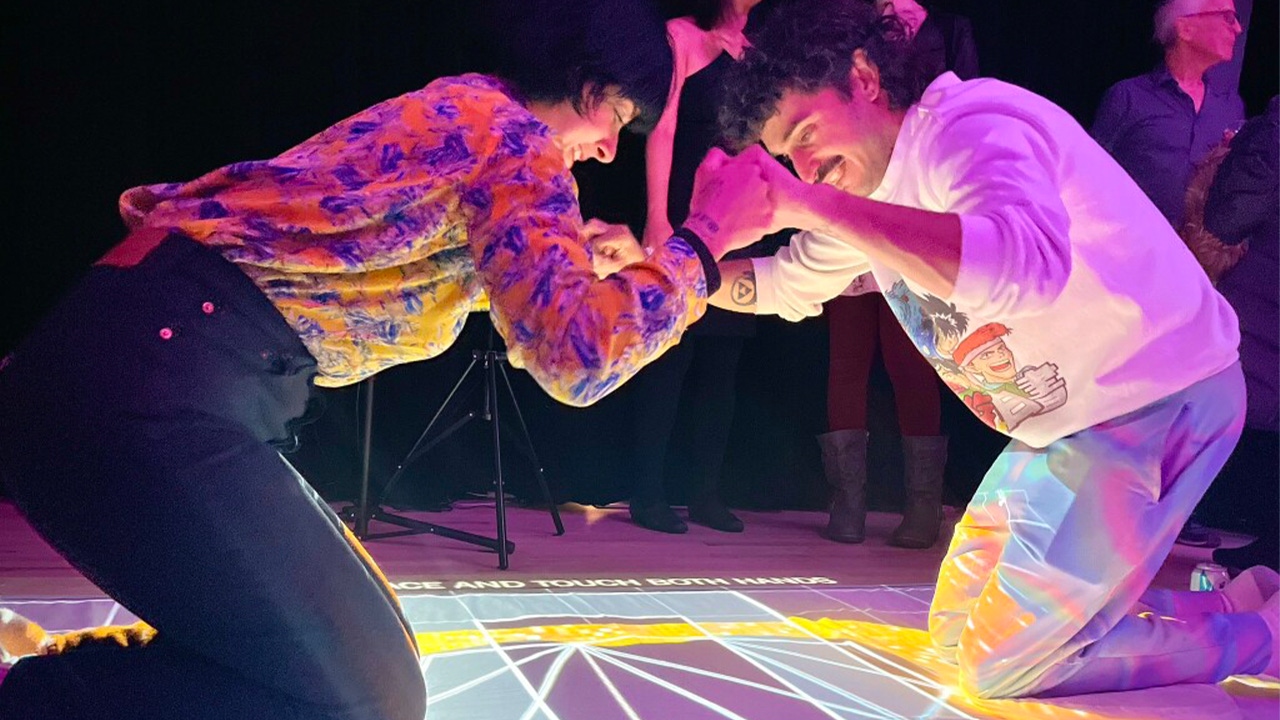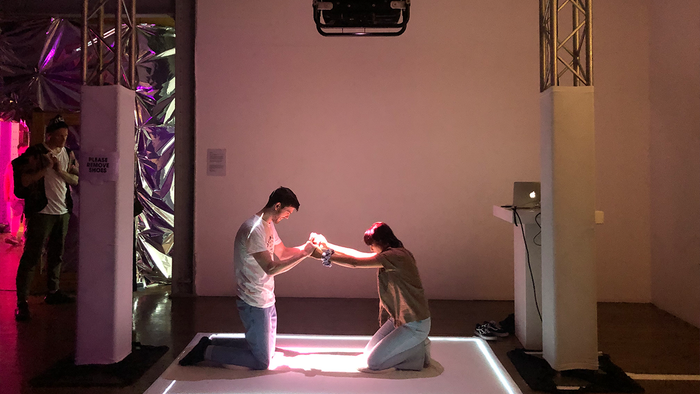Trending
Opinion: How will Project 2025 impact game developers?
The Heritage Foundation's manifesto for the possible next administration could do great harm to many, including large portions of the game development community.
Claire Kwong, creator of experimental video game installation Between, shares her findings after exploring the idea of physical touch as a game mechanic.

Between was one of the most fascinating games at AMAZE Sheffield. The project asks players to sit face to face beneath a projector, holding hands and moving in unison to create fluctuating geometric shapes in the space between. There are no win conditions. Instead, the installation hopes to spark meaningful, physical connections that might flourish when players depart the luminescent play space.
The installation was built by New York-based designer and artist Claire Kwong who sought to overcome her own fear of touch. "I'm painfully shy," she told those who attended her Hyper Talk. "I am a little bit touchphobic and I wanted to get over this. People always talk about overcoming your fears by confronting them, and I feel art and games have a unique power to do this. I wanted to challenge people and myself."
Kwong feels "touch" is an under-explored game mechanic. She has developed projects before that made people move, but those experiences never resulted in a tangible, physical interaction. "Society really establishes strong boundaries against touching each other, and for good reason most of the time, right?," she adds. "Touch can be vulnerable and uncomfortable. But at the same time, touch can bring people closer together. Touch can be intimate. Touch leads to more."
When designing Between, she wanted players to touch but admits it was "hard to figure out the mechanics." A flurry of playtests helped her understand what people were willing and unwilling to do. The end result was a project that encourages strangers to hold hands.
"Research shows that most people will only touch each other's hands, and not other parts of the body. [...] It's important to design for player consent. People have to be willing to play your game. They have to get comfortable to get uncomfortable," she continues.
For instance, Kwong flirted with the idea of doing something quite edgy like projecting onto a bed, but felt that might be pushing players too far. In contrast, asking players to hold hands seemed more safe and socially acceptable but still "transgressive." It meant that when she finally debuted Between, most people threw themselves into the experience, although there were some who simply touched arms or deployed hover hands to fool the projection.

The level of engagement combined with the fact that some people still sought a workaround convinced Kwong she had found the "right boundary." She also realized something else after watching people play: despite setting out to create a "serious" experience, Between ultimately demanded a certain level of silliness.
"I envisioned people looking into each others eyes and falling in love," laughs Kwong. "But you have to be silly to do these things. Touching another person to play this thing is really silly and you have to break the tension."
"People [who played] told me it felt very intimate. Almost romantic or sexual. Some people told me they felt closer to each other after playing the game. Someone even told me they hooked up after playing it.
"One time I played this game with a stranger and I didn't know whether to feel proud of myself that I felt awkward or awkward that I felt awkward–but then we sat beside the installation and talked for an hour. So making this game was a way for me to connect with other people and ultimately I think it made me less shy."
Between helped Kwong realize that video games can encourage players to suspend normal social rules if you can establish a safe, consensual space for play. "When you step into an installation and somebody else does too, you accept this is a game and you can explore boundaries," she adds.
In developing Between, she feels she challenged her own boundaries and created a space for other people to do the same. "Games can expand the possibilities of movement and touch" she says, "and touch can bring people together like nothing else."
Read more about:
AMAZE SheffieldYou May Also Like